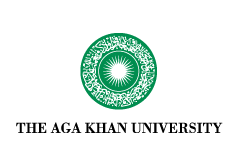Scaling up kangaroo mother care through a facility delivery model in rural districts of Pakistan: Protocol for a mixed methods study
Document Type
Article
Department
Paediatrics and Child Health; Centre of Excellence in Women and Child Health; Institute for Global Health and Development; Office of the Provost
Abstract
Background: The neonatal mortality rate in Pakistan is the third highest in Asia, with 8.6 million preterm babies. These newborns require warmth, nutrition, and infection protection, typically provided by incubators. However, the high maintenance and repair costs of incubators pose a barrier to accessibility for many premature and low birth weight neonates in low- and middle-income countries. This study aims to implement a context-specific kangaroo mother care (KMC) model in Sanghar within secondary health care facilities and catchment communities.
Objective: This study aims to achieve at least 80% KMC coverage for premature and low birth weight neonates.
Methods: This research uses a mixed methods design grounded in implementation science principles, with the goal of developing adaptive strategies tailored to district and facility managers, as well as health care workers, leveraging previous evidence on the benefits of KMC. The research is conducted in the district of Sanghar, Sindh with an emphasis on promoting KMC for infants weighing between 1200 and 2500 g in three facilities. It includes preimplementation data collection, training of health care providers and lady health workers, and intervention involving mother-baby skin-to-skin contact, breastfeeding initiation, and postdischarge follow-ups. Ethical considerations and data management are prioritized, to improve KMC coverage and neonatal health outcomes.
Results: This research will be implemented over a period of 18 months. The primary objective of this research is to achieve an 80% improvement in KMC coverage, with the secondary objective to promote optimal breastfeeding practices among postpartum mothers. Key indicators include the proportion of eligible infants enrolled in KMC, the percentage of mother-baby pairs receiving skin-to-skin care postdischarge, and the duration of KMC during the neonatal period. Additionally, the study will assess exclusive breastfeeding rates, neonatal weight gain, and neonatal deaths within the cohort. The data management team will evaluate the effectiveness of the model in achieving the targeted KMC coverage.
Conclusions: The integration of KMC into the health care system will provide valuable insights for policy makers regarding effective implementation and scaling strategies. The study's findings will highlight facilitators and barriers to KMC adoption, benefiting regions across Pakistan and globally. Additionally, these findings will offer valuable insights for the development of future newborn care programs.
Publication (Name of Journal)
JMIR Research Protocols
DOI
10.2196/56142
Recommended Citation
Muhammad, S.,
Soomro, A.,
Khan, S. A.,
Najmi, H.,
Memon, Z.,
Ariff, S.,
Soofi, S. B.,
Bhutta, Z. A.
(2025). Scaling up kangaroo mother care through a facility delivery model in rural districts of Pakistan: Protocol for a mixed methods study. JMIR Research Protocols, 14(1), 1-9.
Available at:
https://ecommons.aku.edu/coe-wch/132
